| Types of Galaxies Key points: Basic types of galaxy - spiral, barred,
elliptical, irregular; types vs. distance (how young galaxies differ from those around us)
Spiral galaxies are the most intriguing visually,
But in fact galaxies come in many shapes and sizes.
|
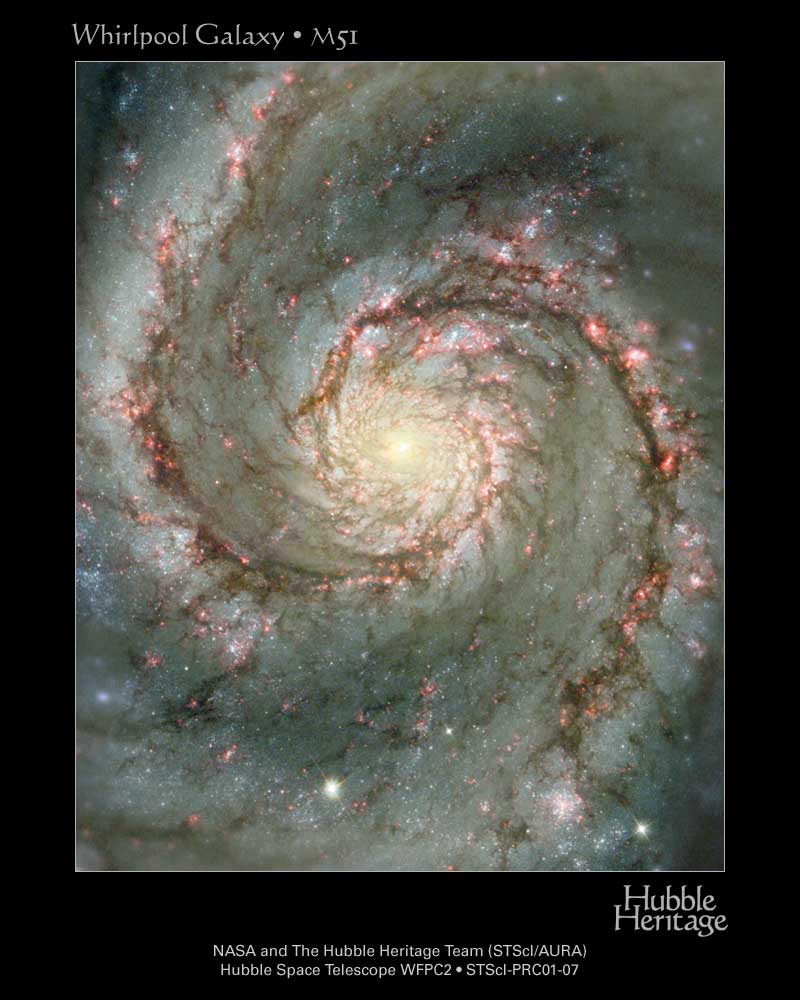 |
Galaxy shapes have 3 broad categories, based on
the role of the bulge (the round distribution of stars at the center) and the
disk (the flat distribution that includes the spiral arms).
spirals , ellipticals, irregulars
, ellipticals, irregulars
Ellipticals are basically all bulge with no disk.
They can range from spherical to elongated,
football-like shapes
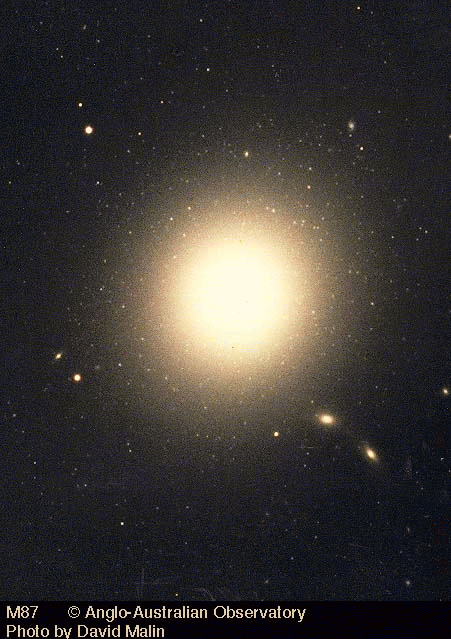 |
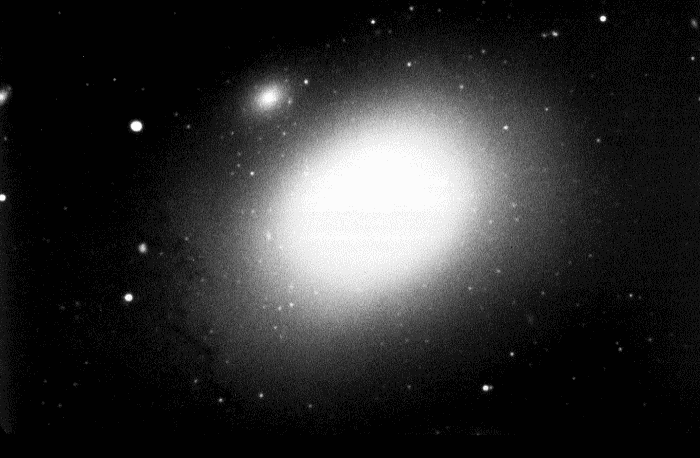 |
| Picture of an elliptical galaxy (M87, the giant
elliptical at the center of the nearby Virgo cluster of galaxies (about 15 million parsecs
away): |
A more "elliptical" elliptical, M86 |
Irregulars -- catchall type for galaxies without symmetric
shapes, and no clear bulge or disk
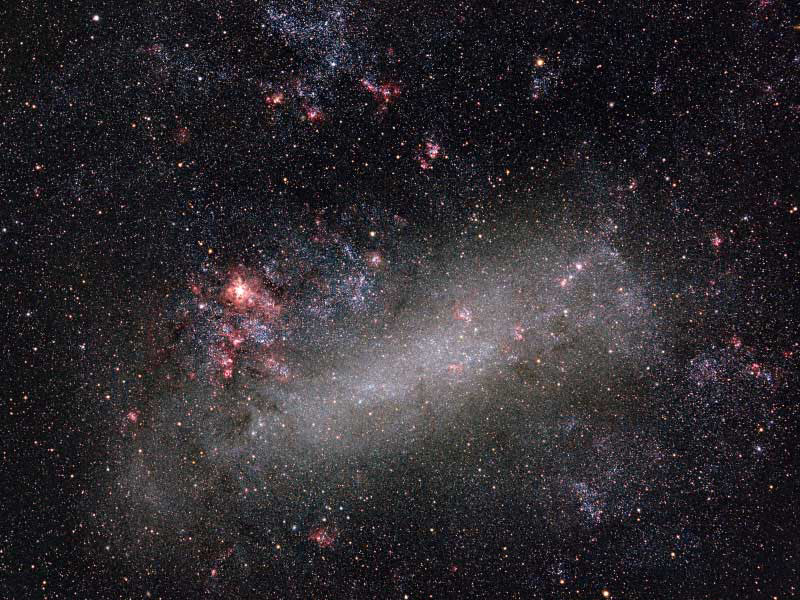 |
Picture of an irregular galaxy, the Large Magellanic Cloud, at 55
thousand parsecs one of the two closest galaxies to the Milky Way (and possibly in the
process of merging with us!) APOD,
W.-H. Wang, IfA, Hawaii,
http://antwrp.gsfc.nasa.gov/apod/ap060510.html |
Note the following systematic trends:
1) Interstellar material ranges from essentially none in ellipticals to
substantial quantities in some irregulars
2) Ellipticals have low to zero rotation rates while spirals have relatively high
rotation rates; that is, the stars in ellipticals have a wide variety of orbits
- a little like a swarm of gnats - whereas in spirals the stars have orbits that
lie in the plane of the disk
3) The most massive galaxies are ellipticals with some irregulars being very small
("dwarfs"). Spirals tend to be intermediate in size.
The most distant galaxies - are they the same
types as nearby ones?
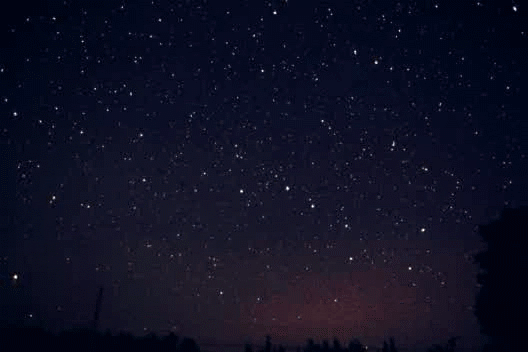 |
Under the leadership of former UA professor Bob Williams, the
Hubble Space Telescope spent many days observing a small region just above the Big Dipper.
The "Hubble Deep Field", or "HDF", is just a point to our unaided
eyes. Here we zoom in by a factor of 1000 to get a look. The total area of the HDF is
about 1% that of the full moon. (From STScI) |
 |
At first glance, the HDF shows more and
more faint galaxies just like the nearby ones. If we look at the ones at the highest
redshift, they seem subtly different -- many are small, like pieces of the large nearby
galaxies. This behavior reminds us of the models of the early Universe, where galaxy
fragments formed first and only later merged into large galaxies. |
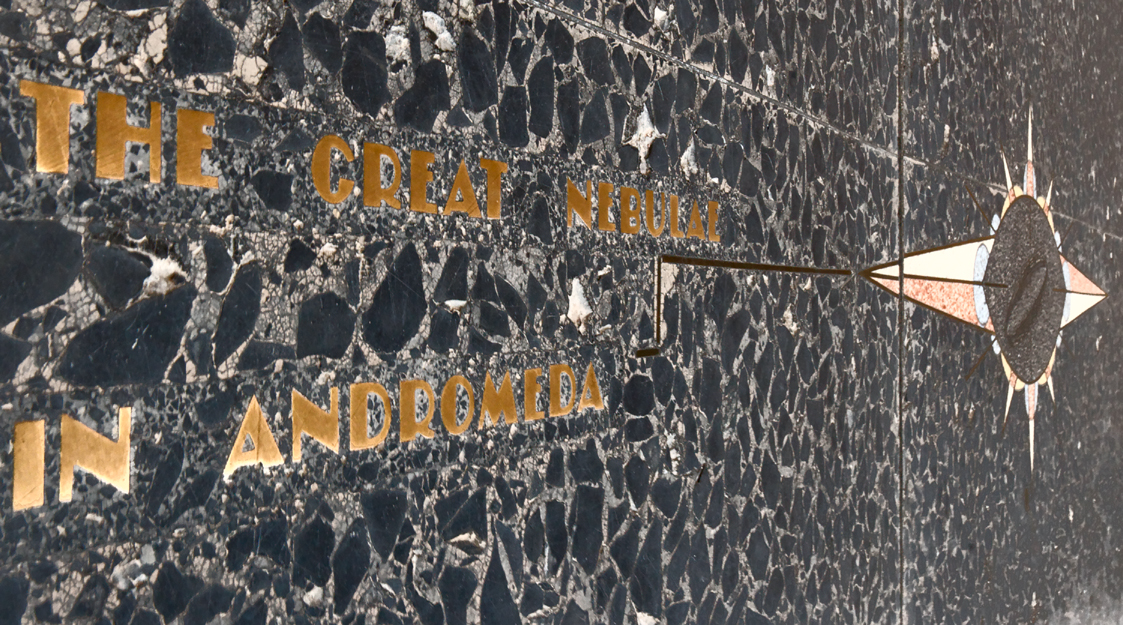
The Great Nebula in Andromeda, from Hoover Dam (G. Rieke) |

|

"Dark
Matter" by G. Rieke
|
Click to return to syllabus |
| Click to return to the Discovery of Galaxies |
hypertext  G. H. Rieke G. H. Rieke |
Click to go to Dark Matter |








